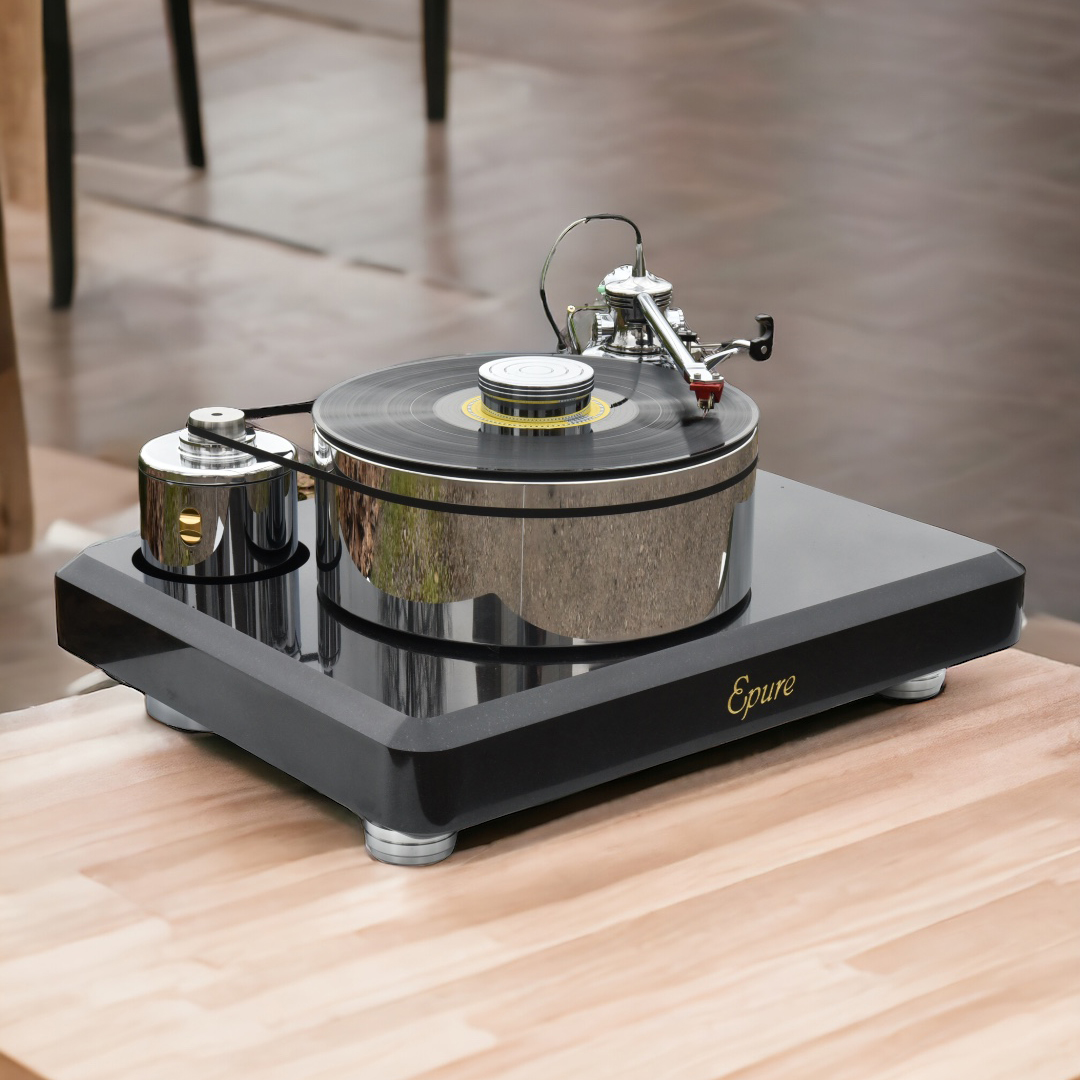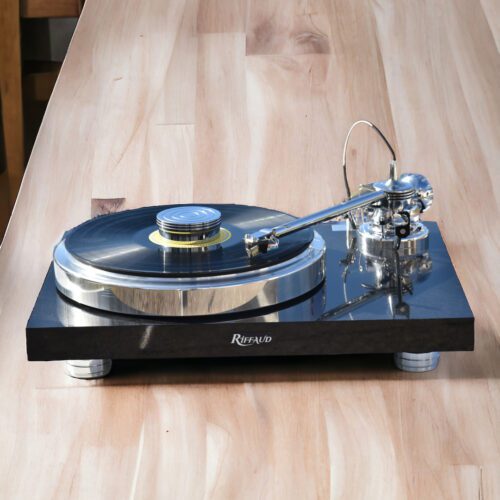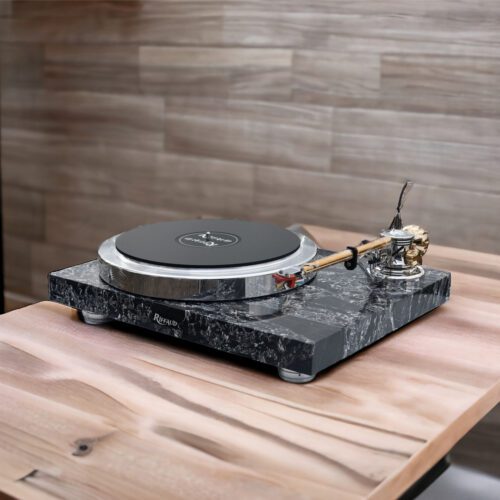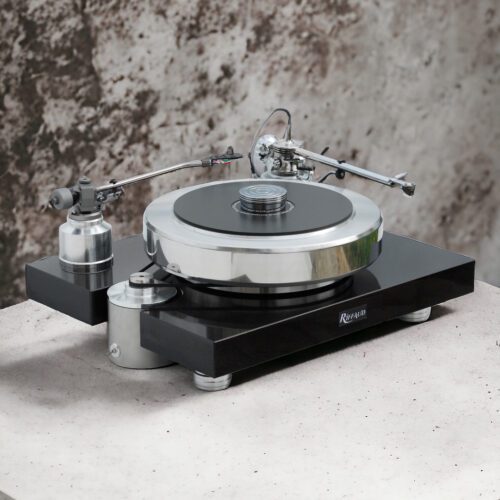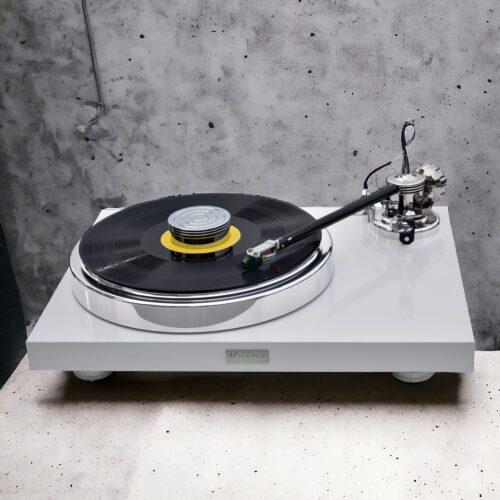Description
EPURE
This is the most common model. It was created in 2007. The Epure Vintage’s stainless steel base has been replaced by a block of black Zimbabwe granite, cut and polished by hand, which retains the same characteristics.
The fundamental principles of Pierre Riffaud’s creations are also evident:
MASS AS AN ABSOLUTE PRINCIPLE
Background: To reproduce music, analog playback of vinyl records involves a process of vibration transfer. First from the groove to the stylus, then from the stylus to the cell’s magnet (or coil), which transforms them into a variable electric current. This current, after amplification, is again transformed into vibrations transmitted to the loudspeaker membrane via the coil, and then into the air, allowing the sound to propagate in the listening room. (This is a reminder that I do not pretend to teach the reader)
Resonances have often been observed on furniture walls or glass panes. These phenomena are natural, as sound comprises all frequencies, some of which generate acoustic waves that resonate with great energy.
As a rule, the turntable is placed in the listening room. So there’s every chance that resonances will also occur on the disc’s surface. They then create parasitic vibrations which are picked up and transferred along with the music into the reproduction chain. This phenomenon occurs much more often than you might think. The sound is altered, as are the dynamics, but this distortion remains at a low level, which is why the ear doesn’t detect it.(at low levels, the ear does not detect distortion in absolute terms, i.e. without any immediate relation to a reference, but after comparative listening the listener will be able to distinguish altered sound from pure sound).
Pierre Riffaud’s solution to this problem is to place ground under the turntable surfaces in contact with the air in the listening room.
The Platine Épure is designed to be massive, so that no surface can be vibrated. All the parts are extremely solid, and the turntable itself is decoupled from its base by feet fitted with suspensions. This suspended mass weighs 70 kg and remains absolutely insensitive to surrounding vibrations. The base is the main mass. Made of black Zimbabwean granite, it is cut from an 80mm-thick block, and accommodates all the fittings needed to assemble the mechanical components. This is the basis of dynamic mass balance.

